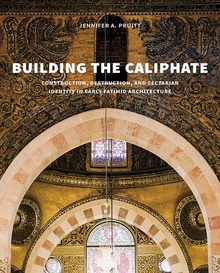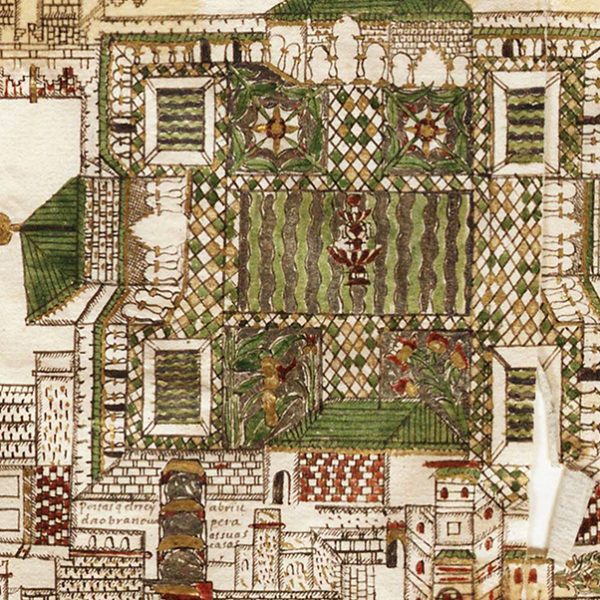A Personal Canon: Jennifer A. Pruitt on Five Influential Texts
In my work, I strive to understand how diverse populations of people used and experienced architecture in the medieval Islamic world. The texts I have chosen for my personal canon explore these cultural interactions, bringing the complexity of medieval humanity to life.
The Cairo Geniza

The Cairo Geniza, which is accessible online through the Taylor-Schechter Cairo Geniza Project at Cambridge University and the Princeton Geniza Lab, is perhaps the most important trove of documents for helping us understand the humanity of the medieval Mediterranean. These are a series of documents – often mere scraps of paper – that were discovered in the Ben Ezra synagogue in Cairo in the 19th century. Far from an official archive, the documents preserve glimpses of everyday life and the priorities of Cairo’s medieval Jewish community. From lamentations written to a husband who travels the seas, to recipes, notes sent home from schoolteachers, biblical passages, and accounting, the Geniza preserves the kinds of documents from non-imperial voices that are often lost to history. In reading these scraps of paper, we experience jolts of recognition as we hear the voice of everyday medieval people come to life.
Amitav Ghosh, In an Antique Land: History in the Guise of a Traveler’s Tale (1992)
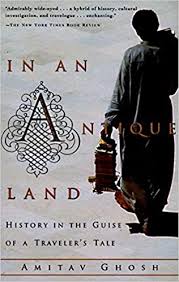
This is the book I recommend as an introduction to anyone interested in thinking about how diverse communities interacted in the medieval period. Written in narrative form by the anthropologist, Amitav Ghosh, the book’s primary story focuses on Ghosh’s experience as an Indian man doing ethnographic research in upper Egypt. His own experiences are interwoven with the imagined journey of a medieval Indian slave, traced through a Geniza fragment. It is a poignant, vivid consideration of the dynamics of global interactions in a postcolonial world, using a medieval tale to explore the nature of human wandering and identity.
History of the Patriarchs of Alexandria
When, as scholars, we try to piece together the details of the medieval Islamic world, we are fortunate to have rich, detailed official histories, sponsored by the court. What is so wonderful about this source is that it is not an imperial source, documenting only the lives of rulers and their commissions. Instead, the source documents the lives of the Coptic Christian patriarchs, including illuminating insight into the lives of the Copts throughout medieval Islamic history. In my book, I relied primarily on the section written by Michael, the Bishop of Tinnis, composed in Coptic and then translated into Arabic. Like the Geniza documents, History of the Patriarchs offers insight into a religious minority community, interweaving historical detail with hagiography and miraculous tales. In it, we can begin to understand how the Coptic community saw themselves, demonstrating both their intimacy with the Muslim majority population and its rulers, but also the religiously-driven conflicts that could occur. Once again, we see the best and worst of multi-religious interactions in the medieval world voiced by those who lived them.
Paula Sanders, Ritual, Politics, and the City in Fatimid Cairo (1994)
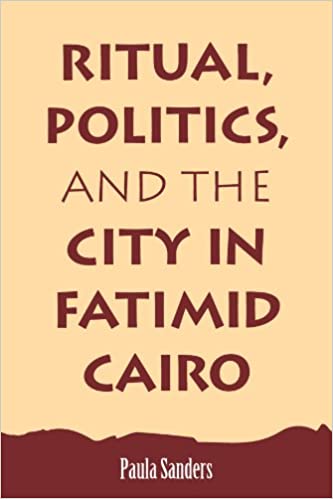
In this groundbreaking study, Sanders explores the rituals of the Fatimid rulers, articulating how the Fatimids used ceremonial practice to express and elevate their power. This text was an animating source for me as I conducted my fieldwork in Cairo. Walking through the remains of the Fatimid streets, on the ground that had once been their palaces, I often thought about Sanders’ retracing of the Fatimid caliph’s steps and her articulation of the multivalent meanings of their actions. Her approach to the complexity of reception in the Fatimid context, along with Irene Bierman’s analysis in Writing Signs: The Fatimid Public Text greatly informed my own thinking on the period.
Gülru Necipoğlu, Architecture, Ceremonial and Power: The Topkapı Palace in the Fifteenth and Sixteenth Centuries (1991)
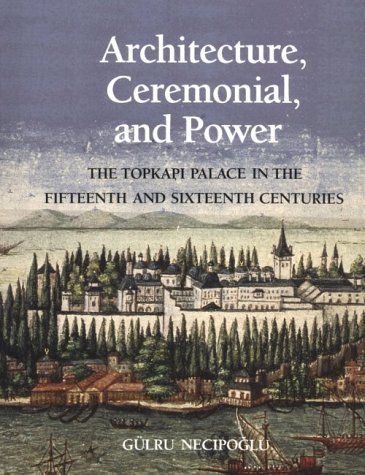
Although not medieval, this book occupies a special place in my scholarly development. This is the book that first got me excited about Islamic architecture as a topic of study. In this seminal text, Necipoğlu gives the Topkapı Palace its rightful place in the history of architecture. Drawing on a wealth of sources, from European, Ottoman, Arabic, and Persian contexts, she demonstrates that architectural form, urban space, and ceremonial practice all informed the meanings of the palace. Necipoğlu’s chapter on the imperial harem particularly energized me as a budding architectural historian. In it, she reclaims the harem from the distorted lens of 19th century Orientalism, considering it on its own terms, along with the women who expressed their power within its walls.
Jennifer A. Pruitt is associate professor of Islamic art history at the University of Wisconsin–Madison. She is the author of Building the Caliphate: Construction, Destruction, and Sectarian Identity in Early Fatimid Architecture.
Bibliography
“Cairo Geniza.” University of Cambridge Digital Library. Accessed January 18, 2021. https://cudl.lib.cam.ac.uk/collections/genizah/1
“Princeton Geniza Lab.” Princeton University. Accessed January 18, 2021. https://geniza.princeton.edu/
al-Muqaffa. Sawirus. The History of the Patriarchs of the Egyptian Church, edited and translated by Aziz Suryal Atiya. 4 vols. Cairo: Société d’Archéologie Copte, 1948-74.
Ghosh, Amitav In an Antique Land: History in the Guise of a Traveler’s Tale. New York, New York: Vintage. 1992.
Necipoğlu, Gülru. Architecture, Ceremonial and Power: The Topkapı Palace in the Fifteenth and Sixteenth Centuries. Boston: M.I.T. Press. 1991.
Sanders, Paula. Ritual, Politics, and the City in Fatimid Cairo. Albany, New York: SUNY Press. 1994.
























